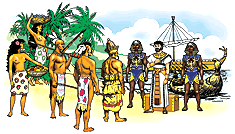In any learning algorithm, there are closed loops on which decisions are made. As a rule, they are binary, that is, Yes / No, Good / Bad, Suitable / Not suitable. All intermediate decisions are made by successive approximation, like finding the maximum number in an array.
What am I leading to? The main idea is that the algorithm always makes decisions based on some information already known to it. Unlike a person who forgets, interprets, invents or does not understand information properly, the algorithm operates mathematically. For this reason, everything created by the machine has collinearity and does not contain anything new.
Of course, artificial intelligence will provoke the emergence of even more content. But the content needs to be structured and verified - this is the task of a person, it is possible to predict the emergence of new professions.
Texts and images created by neural networks need to be corrected and supplemented - this is also a human task, it is possible to predict the expansion of the functionality of a number of existing professions of designers, editors and translators.
One thing is for sure, the introduction of learning algorithms into workflows affects the redistribution of time resources of production and business processes. Just like the introduction of machine tools with control in production leads to an increase in labor productivity, reduces time costs, but does not exclude people and these processes.


